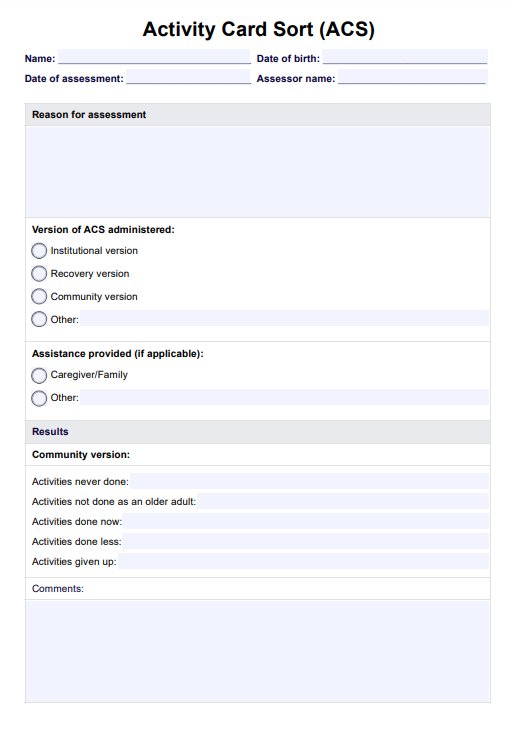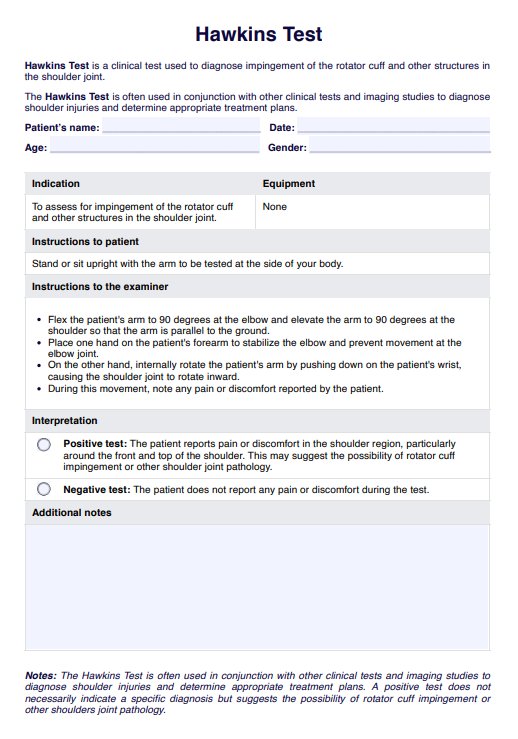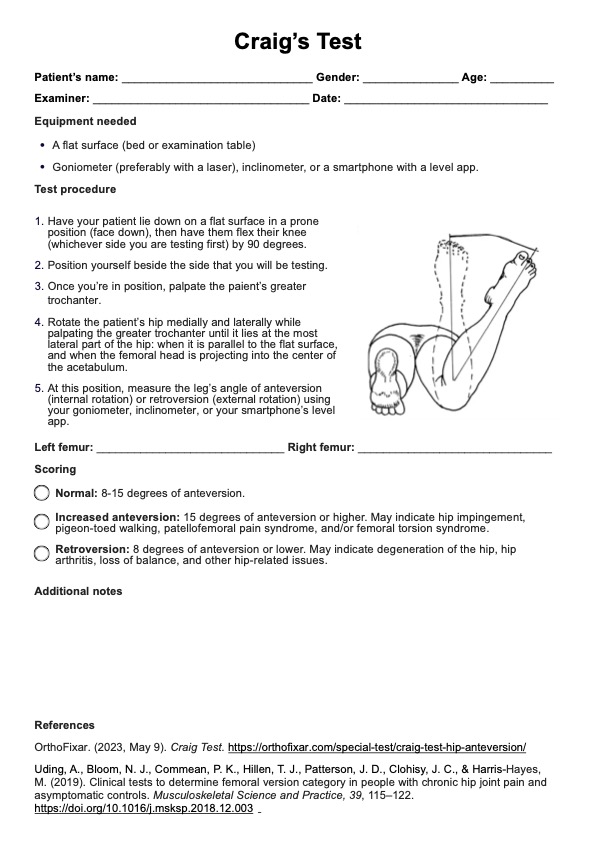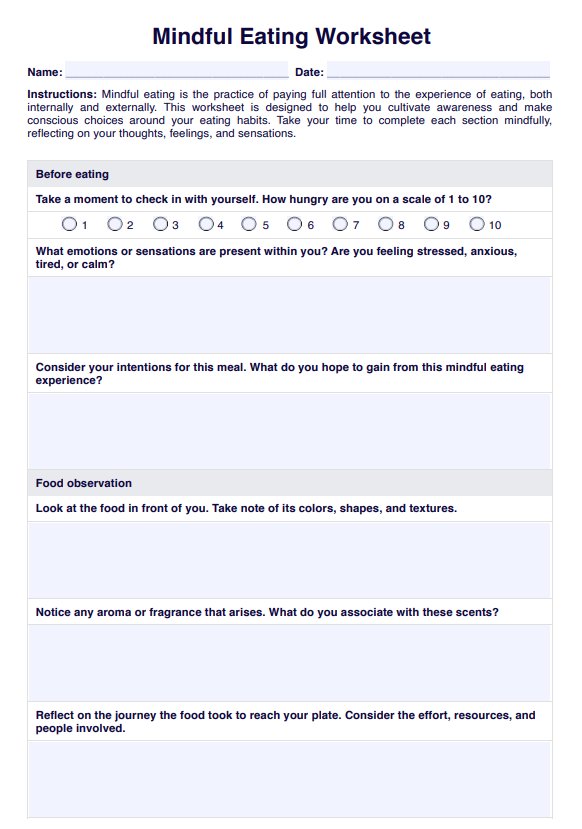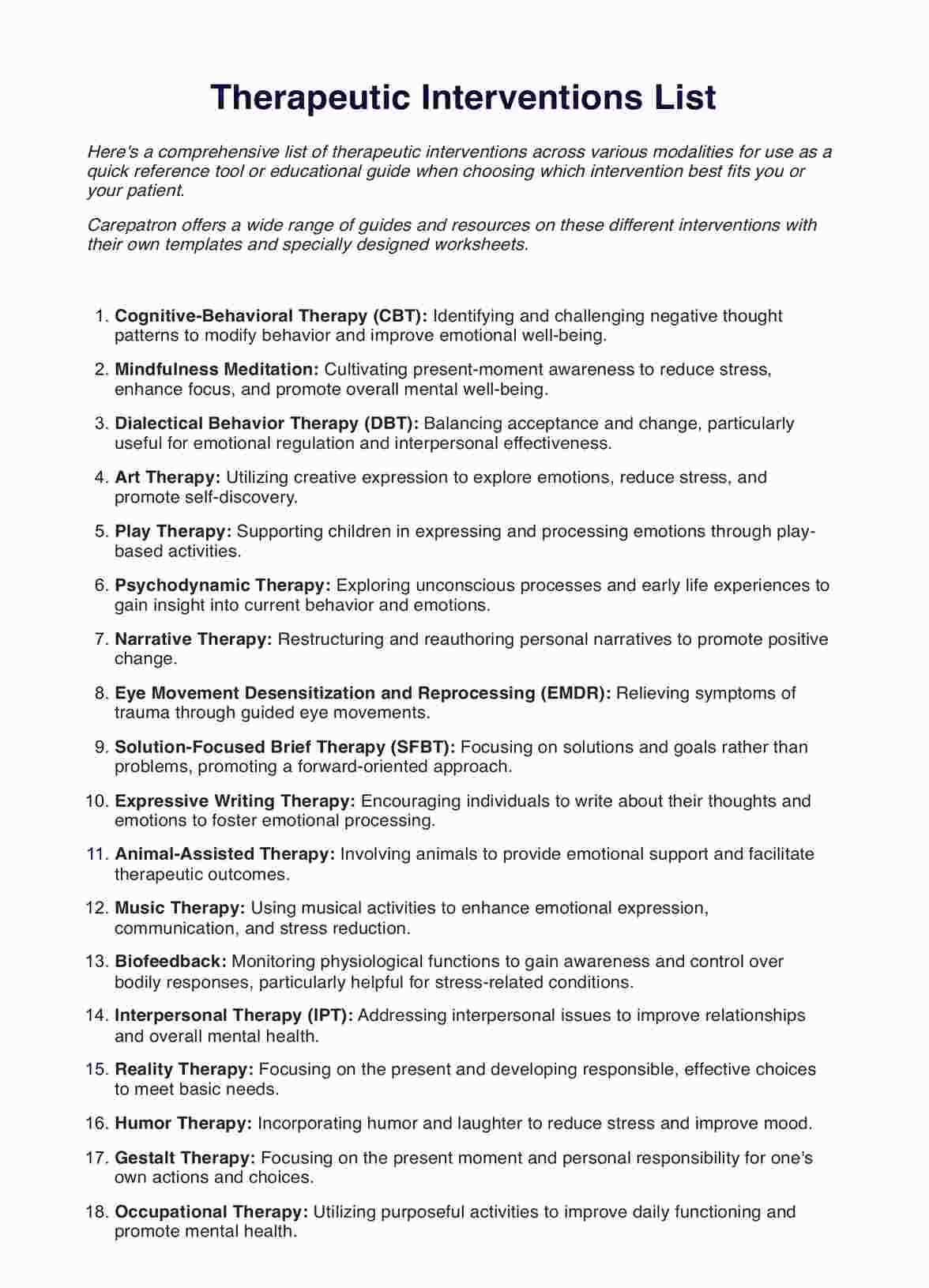Massage Therapy Business Plan
Creating a massage therapy business plan? Download Carepatron's free PDF to guide you through the process and help you create a successful massage therapy business plan.


What is a business plan?
A business plan is a foundational document that outlines the goals, strategies, and operational details of a business. It is a roadmap for entrepreneurs, guiding them through the process of starting, managing, and growing their ventures. Whether you're launching a new practice, expanding an existing clinic, or seeking financing, a well-crafted business plan is essential for success.
At its core, a business plan provides an overview of your business idea and how you plan to execute it. It includes sections covering market analysis, target demographics, competitive landscape, pricing strategies, marketing plans, and financial forecasts. By articulating your vision and strategy in a structured format, you can communicate your massage therapy business concept effectively.
Massage Therapy Business Plan Template
Massage Therapy Business Plan Example
Main components of business plans
A well-structured business plan comprises several key components, each playing a crucial role in defining and guiding the trajectory of the business. Let's explore these components in detail:
Executive summary
The executive summary is a concise overview of the entire business plan. It highlights the key elements of the plan, including the business concept, target audience, competitive advantage, and financial projections.
Business model
The business model outlines how your business intends to generate revenue and create customer value. It describes your products or services, your target market, pricing strategy, distribution channels, and revenue streams.
Market analysis
The market analysis section thoroughly examines the massage therapy landscape, target audience demographics, and competitive dynamics. It involves conducting thorough research to identify market trends, customer needs, and competitors' strengths and weaknesses.
Marketing strategy
Marketing strategies outline how you'll attract and retain customers, promote your massage therapy services, and differentiate your brand in the marketplace. It includes a detailed description of your target audience, messaging strategy, distribution channels, and promotional tactics.
Financial plan
The financial plan outlines the financial projections and requirements for your business. It includes revenue forecasts, expense budgets, cash flow projections, and funding requirements.
Why should massage therapists have a business plan?
Creating a business plan is essential for massage therapists who aspire to build successful and sustainable businesses. Let's explore the reasons why having a business plan is crucial:
Clarifies business goals and objectives
A massage business plan provides massage therapists with a clear roadmap for achieving their goals and objectives. Whether you specialize in Swedish massage, deep tissue massage, or hot stone massage, having a defined plan helps align your efforts with your long-term vision for your massage business.
Guides strategic decision-making
In the competitive landscape of the massage therapy industry, strategic decision-making is crucial for success. A well-crafted business plan helps a licensed massage therapist make informed decisions about pricing strategies, marketing initiatives, and service offerings. Through market research and analyzing industry trends, therapists can identify opportunities for growth and position their businesses for success in the market.
Attracts investors and lenders
For health professionals, specifically in the massage industry, seeking financing to start or expand their businesses, a solid business plan is essential for attracting investors and lenders. Investors and lenders want to see a clear and comprehensive plan that demonstrates the business's viability and potential return on investment.
Enhances operational efficiency
Your own business plan outlining operational processes and workflows helps massage therapists streamline their operations and improve efficiency. From scheduling appointments, managing inventory, tracking financial performance, and monitoring client satisfaction, a well-defined plan ensures that therapists have the systems and procedures to run their businesses smoothly and effectively.
How to create a Massage Therapist Business Plan
Crafting a comprehensive business plan for your successful massage therapy business is crucial. Below are some steps to create a solid plan:
1. Conduct market research
Begin by researching massage therapy businesses and industry and your target audience. Identify trends, demographics, and competitors in your area. Resources like the American Massage Therapy Association (AMTA) can provide valuable insights into industry standards and best practices.
2. Define your unique value proposition
Determine what sets your massage therapy services apart from the competition. Define your unique value proposition, highlighting the benefits clients will receive from choosing your services over others. Whether it's specialized techniques, personalized care, or convenient location, clearly communicate what makes your new massage business stand out.
3. Outline your services and pricing
Detail the types of massage therapy services you'll offer and establish pricing structures for each. Consider factors such as session duration, specializations (e.g., deep tissue massage, sports massage), and package deals. Ensure that your pricing reflects the value of your services while remaining competitive in the market.
4. Develop a marketing plan
Create a comprehensive marketing plan to promote your mobile massage business plan and attract clients. Determine your target audience, channels (e.g., website, social media, local advertising), and messaging strategies. Leverage digital marketing techniques such as search engine optimization (SEO) and social media marketing to reach potential clients effectively.
5. Set financial goals and projections
Establish financial goals for your massage therapy business, including revenue targets, expenses, and profit margins. Develop financial projections based on your market research and pricing strategies. Consider factors such as startup costs, ongoing expenses (e.g., rent, supplies), and potential revenue growth over time.
6. Create an operational plan
Outline the operational aspects of your massage therapy business, including staffing, scheduling, and customer service. Define roles and responsibilities for yourself and any employees or contractors. Develop processes for managing appointments, handling payments, and maintaining client records to ensure smooth operations.
7. Assess risks and contingencies
Identify potential risks and challenges impacting your own massage therapy business, such as regulatory requirements, economic downturns, or unexpected events (e.g., pandemic). Develop contingency plans to mitigate these risks and ensure business continuity. Consider insurance coverage, emergency funds, and alternative revenue streams.
8. Review and refine your plan regularly
Regularly review and update your massage therapist business to reflect market, industry, or business circumstances changes. Monitor key performance indicators (KPIs) such as client retention rates, revenue growth, and customer satisfaction to track progress toward your goals. Stay adaptable and open to refining your strategies to maintain a successful massage business.
Tips and common mistakes
Navigating the process of creating a massage therapy business plan can be challenging. Here are some valuable tips to help you along the way, along with common mistakes to avoid:
1. Set SMART goals
Common mistake: Failing to set specific and measurable goals can lead to ambiguity and lack of direction in your business plan. Avoid vague objectives and strive for clarity and specificity in your goal-setting process.
Tip: When defining your business goals, use the SMART criteria: Specific, Measurable, Achievable, Relevant, and Time-bound. This ensures your goals are well-defined and actionable, setting the stage for success.
2. Conduct thorough market research
Common mistake: Neglecting market research can result in a lack of understanding of your target audience and the competitive landscape. This may lead to misguided strategies and ineffective business decisions.
Tip: Take the time to conduct comprehensive market research to understand the needs and preferences of your target market. Identify trends, competition, and opportunities to effectively position your massage therapy business.
3. Focus on differentiation
Common mistake: Failing to differentiate your massage therapy business can result in being perceived as a commodity, leading to price competition and difficulty building a loyal client base. Avoid generic messaging and emphasize what sets you apart from others in the industry.
Tip: Clearly articulate your unique value proposition and how your massage therapy services stand out. Highlight factors such as specialized techniques, exceptional customer service, or convenient location to attract clients and differentiate your business.
Develop a realistic financial plan
Common mistake: Overestimating revenue projections or underestimating expenses can lead to financial instability and challenges in sustaining your business in the long run. Be conservative in your financial planning and seek professional guidance if needed.
Tip: Develop a realistic financial plan that accounts for startup costs, operational expenses, and revenue projections. Consider factors such as pricing strategies, cash flow management, and contingency planning to ensure the financial health of your massage therapy business.
Regularly review and update your plan
Common mistake: Failing to review and update your business plan can result in outdated strategies and missed growth opportunities. Keep your plan relevant and responsive to changes in the external environment to maintain a competitive edge in the market.
Tip: Treat your massage therapy business plan as a dynamic, evolving document. Regularly review and update your plan to reflect changes in the market, industry trends, and business circumstances.
Commonly asked questions
A massage therapy business plan should typically be concise and focused, ranging from 5 to 20 pages. It should cover essential aspects such as market analysis, marketing strategies, financial projections, and operational plans.
Massage therapy business plans should be reviewed and updated annually or as needed in response to significant changes in the market, industry trends, or business circumstances. Regular updates ensure that the plan remains relevant and aligned with the evolving needs and goals of the business.
Creating a business plan on Carepatron is easy and intuitive. We have an online business plan template for practitioners to create their business plans. Carepatron's user-friendly interface and customizable templates make creating a professional business plan tailored to your massage therapy practice simple.


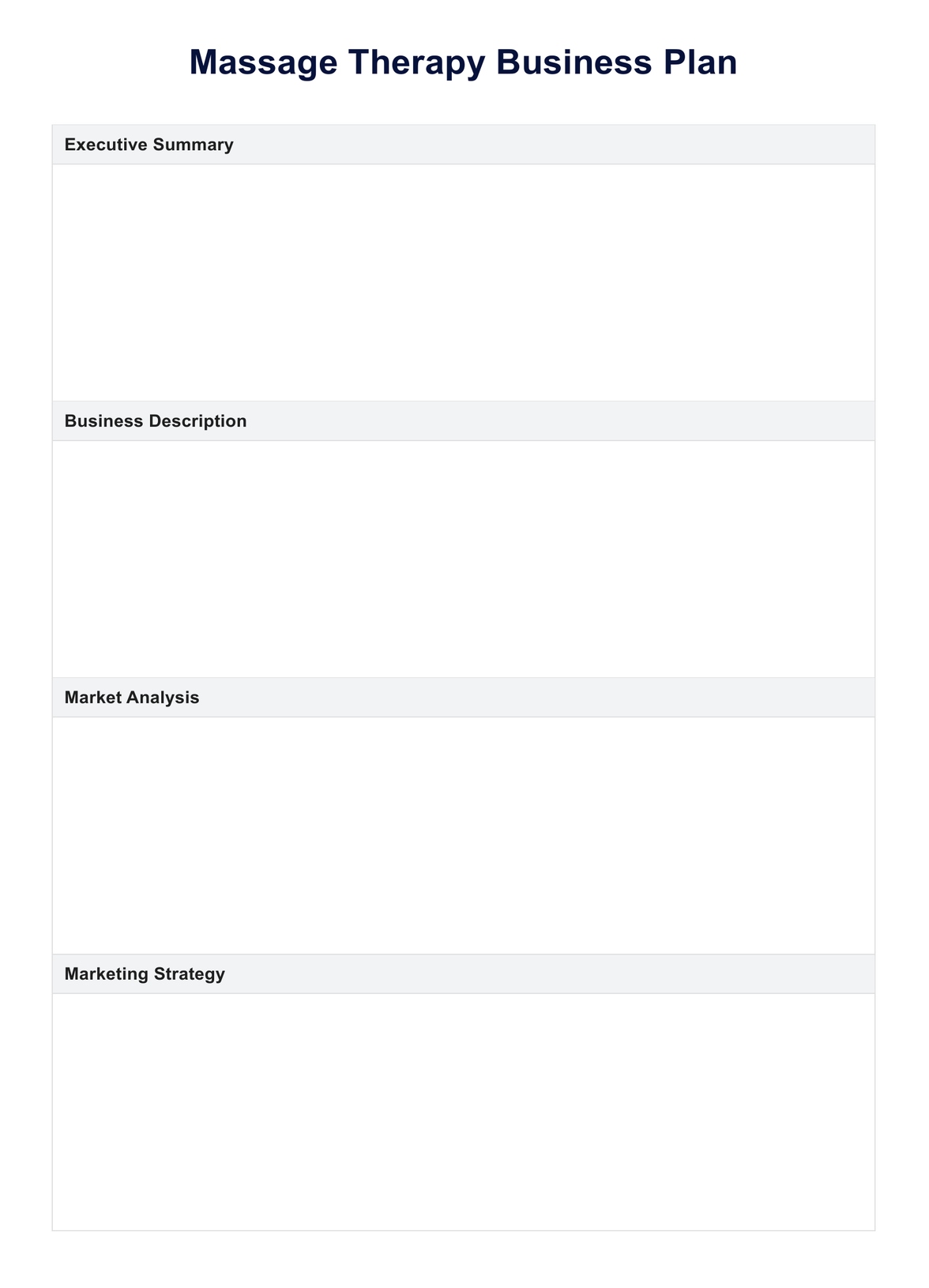
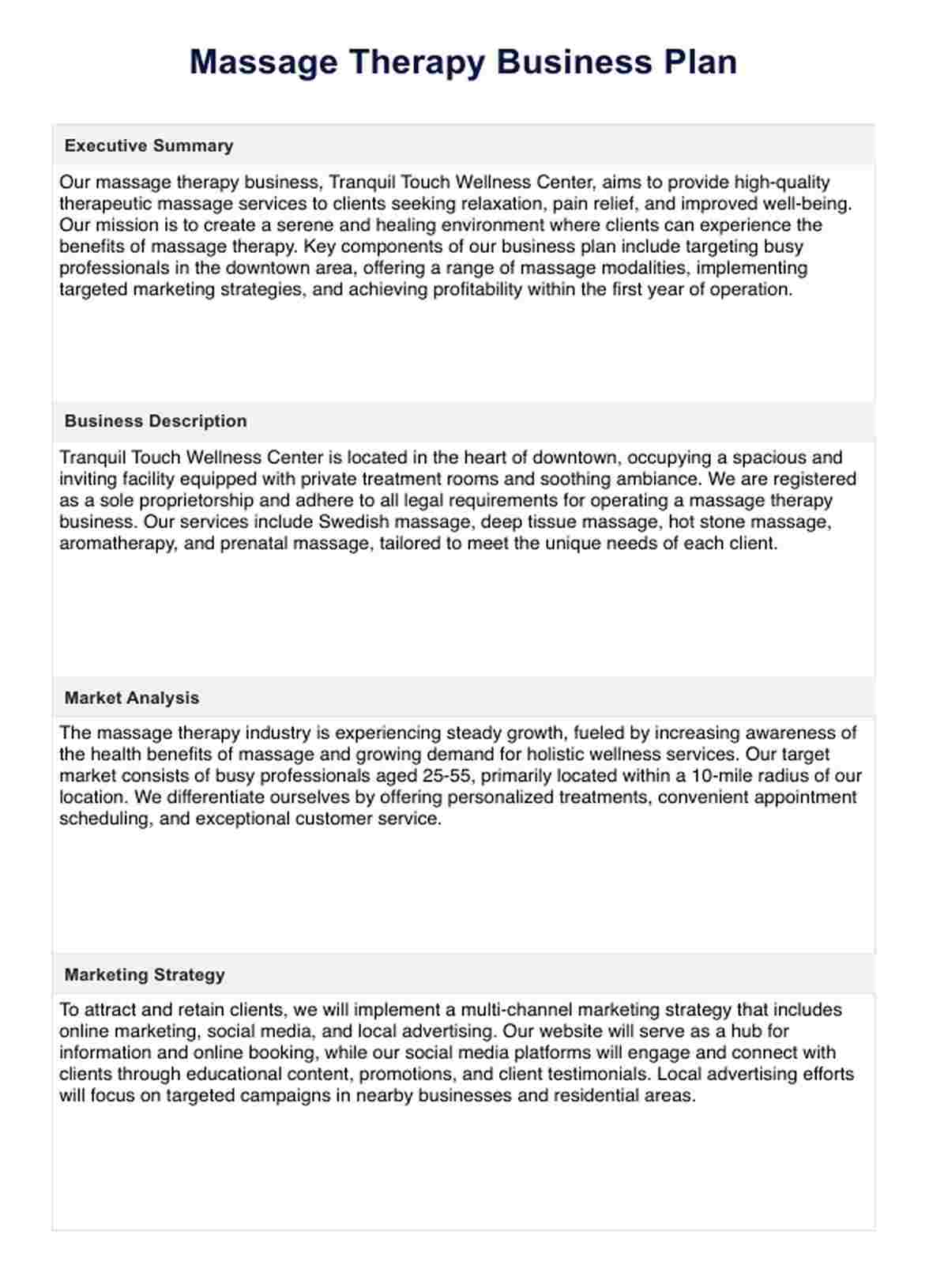


















-template.jpg)

















































































